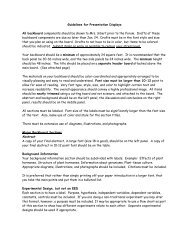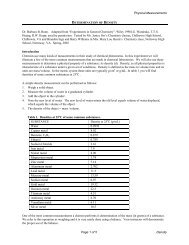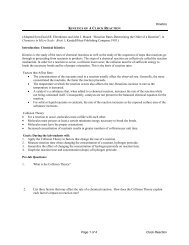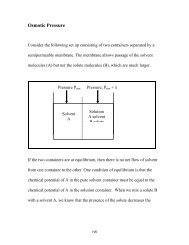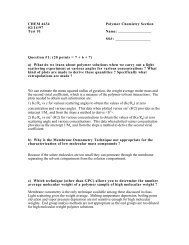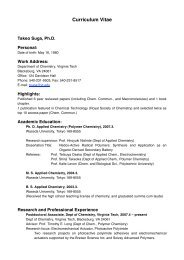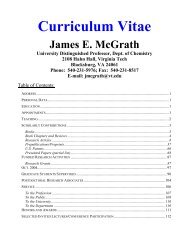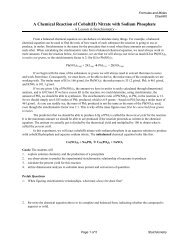Carlier Group Gaussian User Manual - Virginia Tech
Carlier Group Gaussian User Manual - Virginia Tech
Carlier Group Gaussian User Manual - Virginia Tech
Create successful ePaper yourself
Turn your PDF publications into a flip-book with our unique Google optimized e-Paper software.
<strong>Carlier</strong> <strong>Group</strong> <strong>Gaussian</strong> <strong>User</strong> <strong>Manual</strong> 17<br />
these can be restarted (for example see sections 2.B., 4.A., and 5.B.). However,<br />
frequency calculations cannot be restarted—they start from the beginning. Experience<br />
will prove helpful here in setting the estimated wall time.<br />
2. The default in this testE.sh file is to use one processor. Only use more than one if<br />
you know you need it!<br />
You will note that the core of the .sh file embeds the launch command<br />
g09 testE.gjf testE.out<br />
Make sure you edit your .sh file to include the name of the input (.gjf) and output (.out)<br />
files that you want to use and write!<br />
03. Z-Matrices<br />
A. Internal vs Cartesian coordinates<br />
Traditionally Z-matrices have implied the use of internal coordinates. But <strong>Gaussian</strong><br />
seems to use this term more broadly sometimes to refer to cartesian coordinates.<br />
GaussView generates input files based on internal coordinates. What follows below is<br />
a description of internal coordinates.<br />
How does it work? Everything is defined in terms of R, A, and D from other atoms<br />
R is distance, A is angle, D is dihedral.<br />
The first atom is at the origin. The second atom is defined only with a distance, the<br />
third with a distance and an angle, then the rest need three parameters. In this way<br />
one can understand the 3N-6 degrees of freedom of a molecule.<br />
R, A, and D are defined with respect to atoms--note that the atoms are numbered<br />
sequentially (numbers not shown). In the example below C2 is 1.492004 Å away from<br />
C1. The distance of C3 from C2 is given, and the C3C2C1 angle is 60.314221<br />
degrees. Finally, the Distance of H4 from C1 is given, as is the 412 angle, and the<br />
4123 dihedral angle is -110.121478 degrees.<br />
C<br />
C 1 1.492004<br />
C 2 1.504535 1 60.314221<br />
H 1 1.077448 2 117.368114 3 -110.121478<br />
Note that a common GaussView and Molden format for Z-matrices lists variables R1,<br />
R2, in the matrix itself, and then specifies the value of each variable below the matrix.<br />
It's the same thing.<br />
Proper cartesian coordinate formatting (for another structure) in <strong>Gaussian</strong> looks like this:



